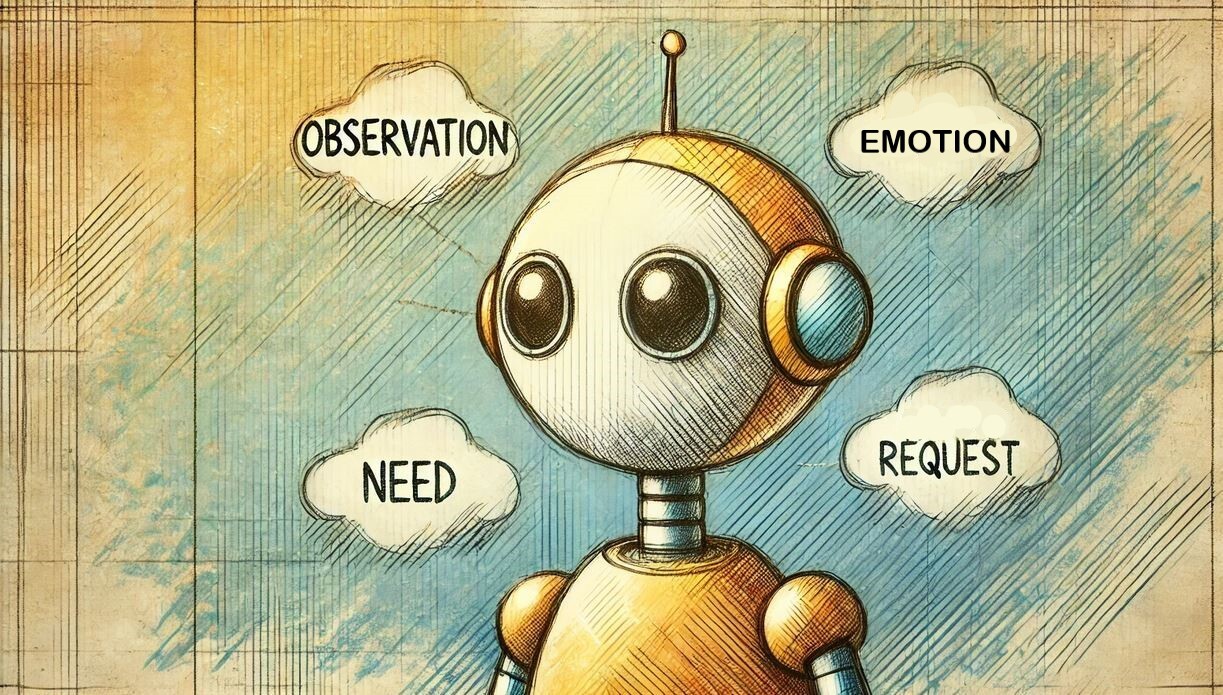The power of nonviolent communication
During a research meeting, two researchers analyze the same dataset but get to different conclusions. One of them might say, “your analysis is wrong.” According to the principles nonviolent communication (NVC), however, a more suitable response could be, “I see the data differently and would like to understand your interpretation. Can we go through it together?” This shift in communication supports collaboration rather than defensiveness.
Nonviolent communication, a concept developed by Marshall Rosenberg in 2003, is a compassionate way of expressing ourselves without blame, criticism, or aggression, emphasizing understanding, empathy, and clarity in interactions, thus leading to deeper connections and reducing conflict.
This method intends to strengthen self-efficiency, self-responsibility, and self-confidence.
A quick guide to integrating NVC into daily communication
• Observation: Stick to the facts without judging or interpreting. Focus on what happened without labeling it. By using sentences like: “I can see that,” “I noticed that,” and “what I have done.” Instead of “you’re always late,” say “I noticed you arrived 15 minutes after our meeting started” (Rosenberg, 2015).
• Emotions: Express feelings and needs – Share how the situation affects you emotionally. For example, “I feel frustrated because I need reliability to complete our work smoothly” (Goleman, 2006).
• Need: express what you find important and appreciate to be respected: “I would like,” “what counts for me is,” “I find it important to”
• Request: Make clear, unambiguous requests. Ask for concrete actions without demanding. “Would you be open to,“ “That’s why I want to ask you to” (Rosenberg, 2003).
Ultimately, NVC is about how we express ourselves, not about expecting others to be non-violent toward us. It teaches us to take responsibility for how we express ourselves rather than expecting others to change their behavior first (Rosenberg, 2003) and shifts the focus from blame to understanding.
Non violent communication does have its critics, but it ultimately aims at maximizing chances for meaningful dialogue and resolution and to create the possibility for mutual understanding and cooperation.
References and further readings
• Goleman, D. (2006). Social Intelligence: The New Science of Human Relationships. Bantam.
• Rosenberg, M. B. (2003). Nonviolent Communication: A Language of Life. PuddleDancer Press.
• Rosenberg, M. B. (2015). Practical Spirituality: Reflections on the Spiritual Basis of Nonviolent Communication. PuddleDancer Press.
• Kashtan, M. (2015). Reweaving Our Human Fabric: Working Together to Create a Nonviolent Future. Fearless Heart Publications.
• Bowers, J., & Moffett, L. (2012). Deep Listening: A Healing Practice to Support Nonviolent Communication. CreateSpace Independent Publishing.





